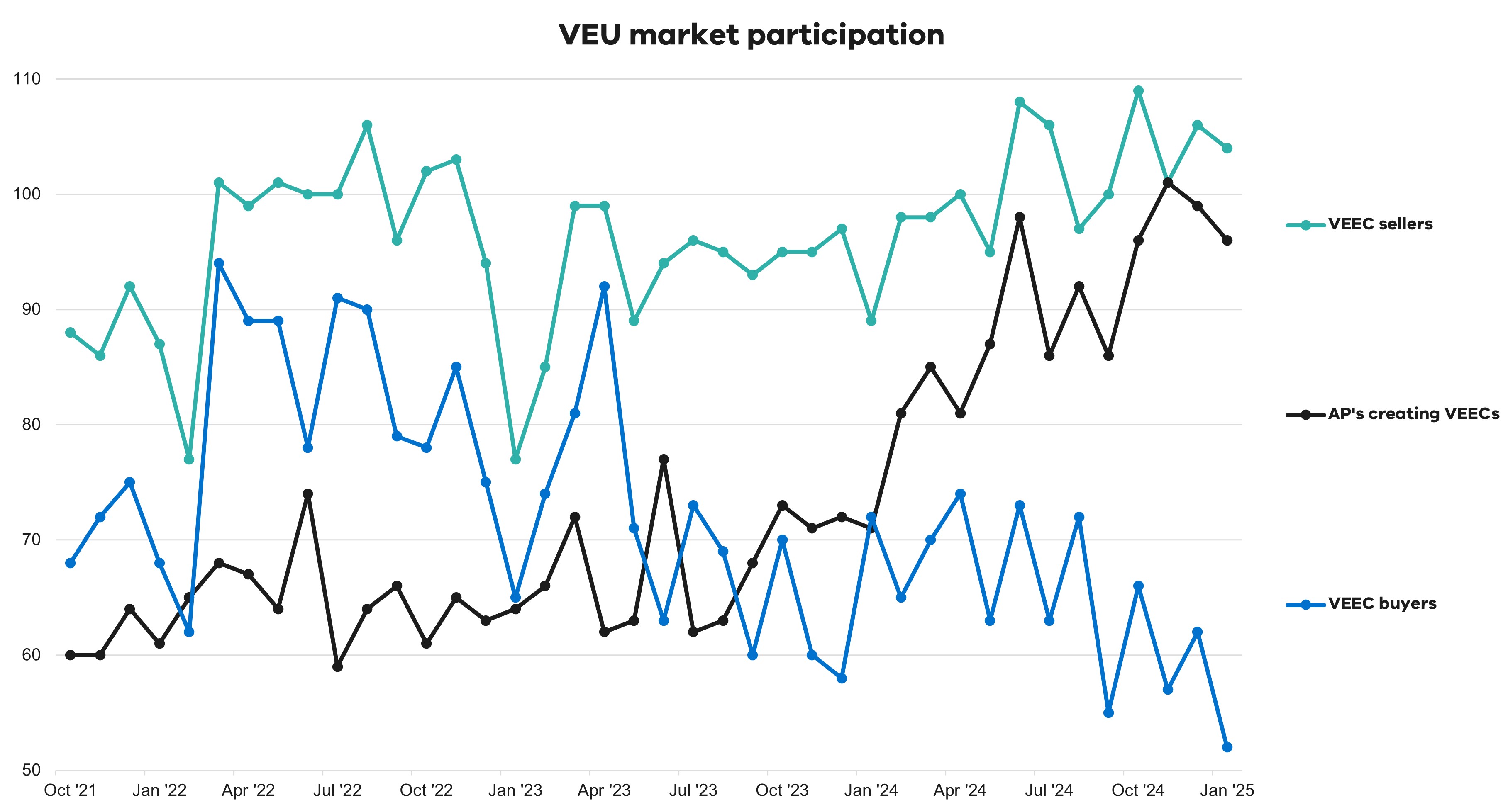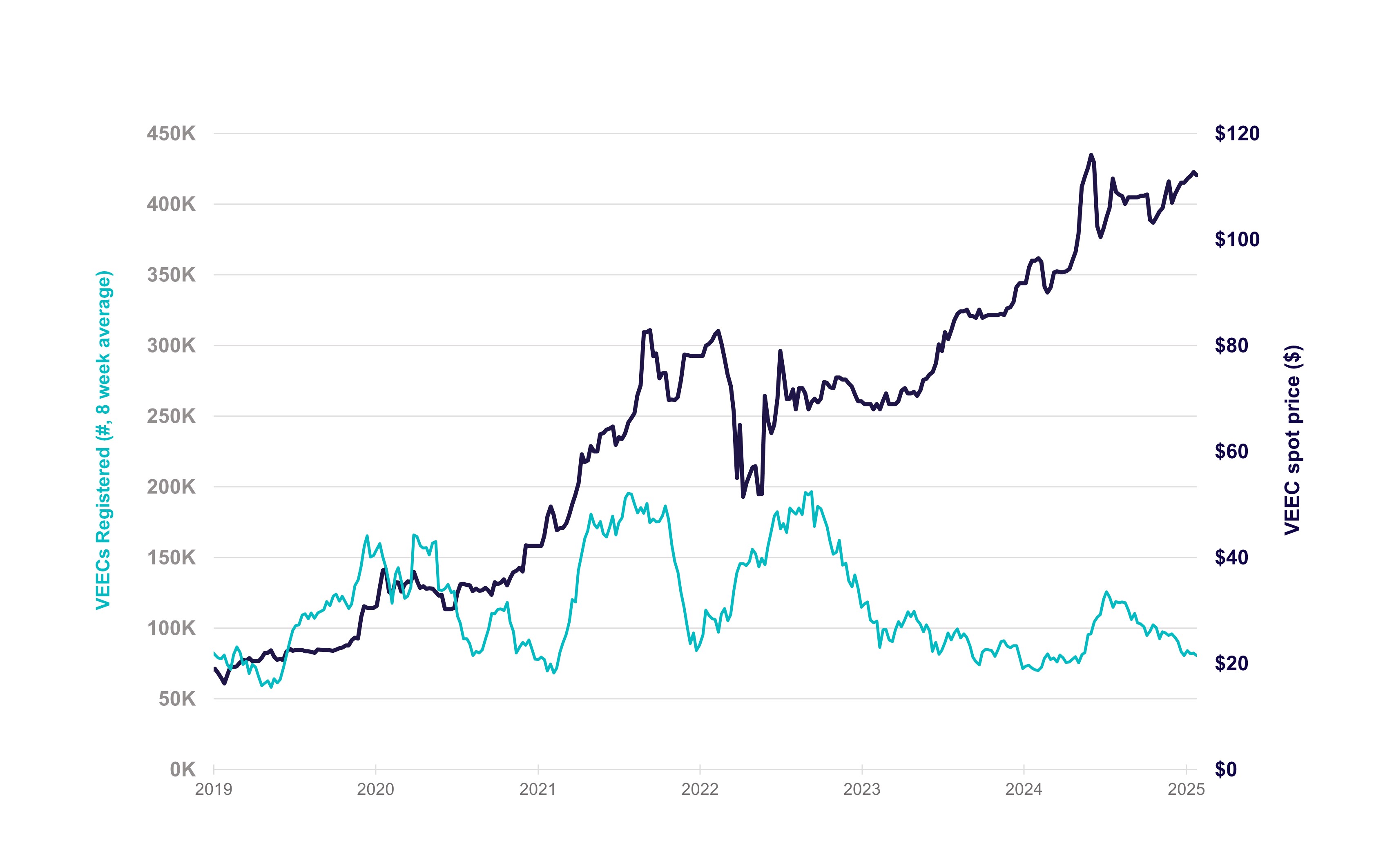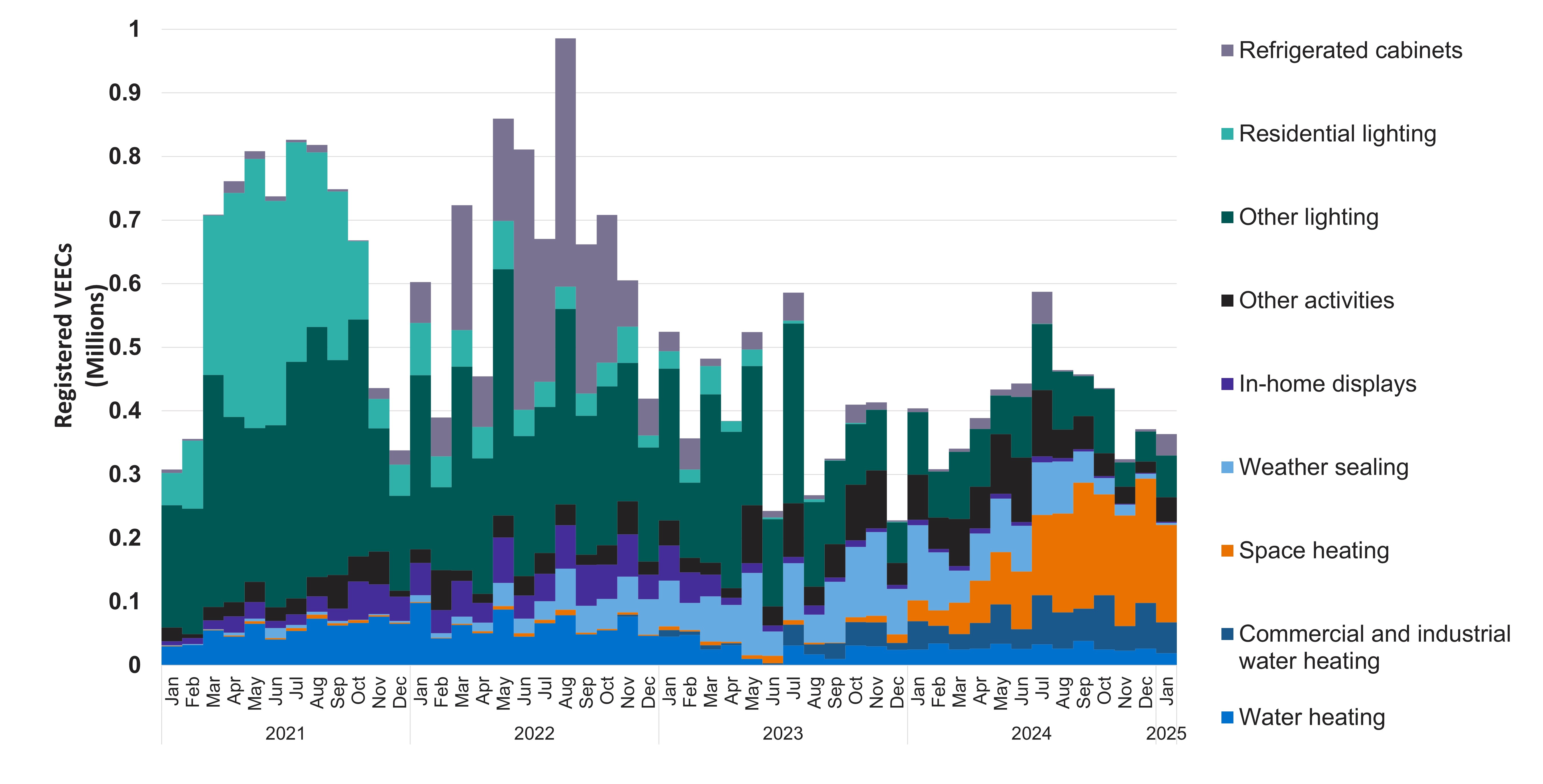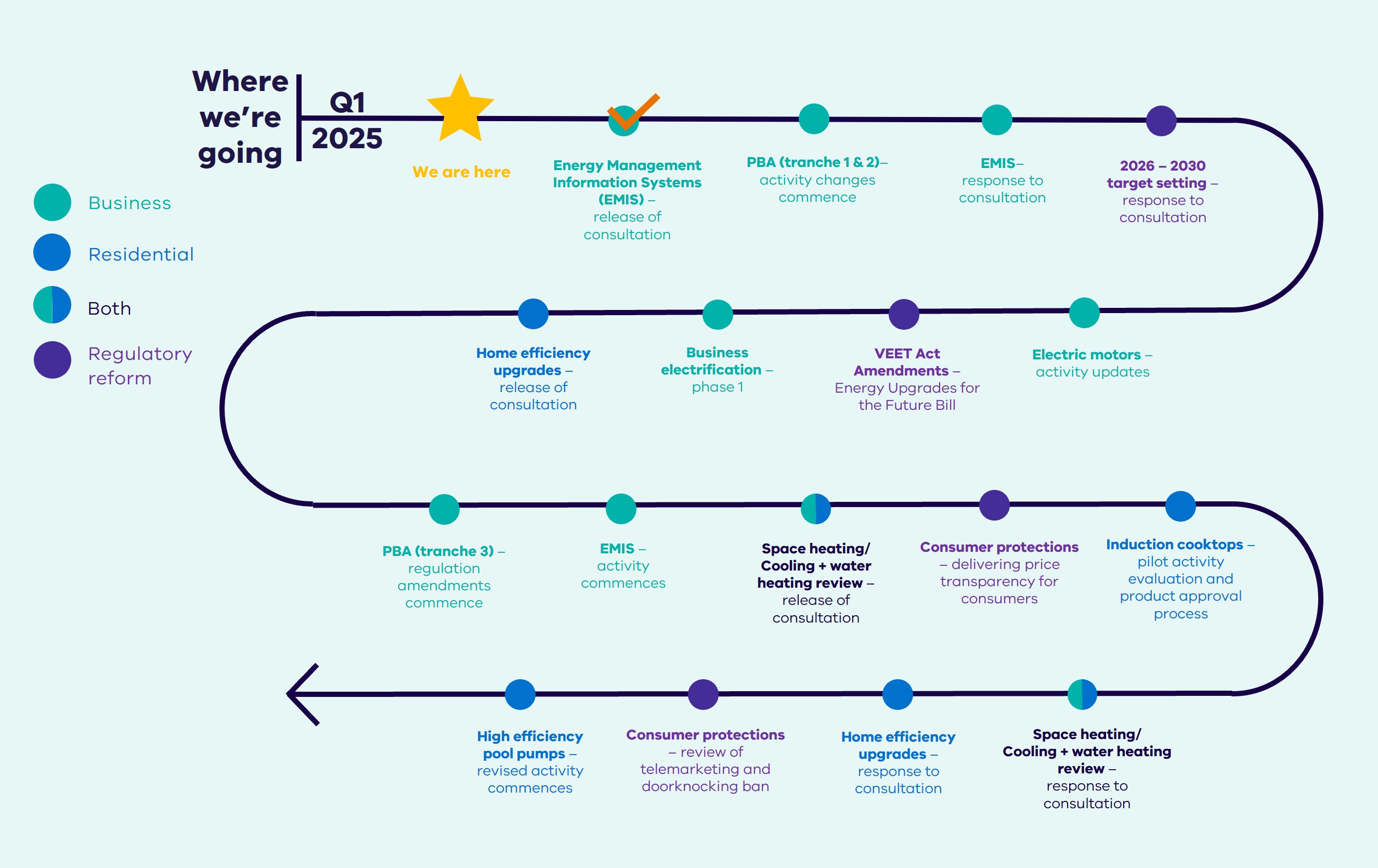Completed
Energy Management Information Systems – release of consultation.
To do
Large Energy User Exemption Framework – release of consultation.
Project Based Activities – activity changes commence (tranche 1 & 2).
Electric Motors – update to activity.
Water Heating and Space Heating/Cooling quality review – release of public consultation.
2026 – 2030 Target Setting – response to consultation.
Energy Management Information Systems – response to consultation.
Act Amendments – Energy Upgrades for the Future Bill.
Business Electrification – phase 1.
Home efficiency upgrades – release of consultation.
Consumer protections – delivering price transparency for consumers.
Project Based Activities – regulation amendments commence (tranche 3).
Energy Management Information Systems – activity commences.
Electric Motors – update to activity.
Water Heating and Space Heating/Cooling quality review – release of public consultation.
Induction cooktops – pilot activity evaluation.
Water Heating and Space Heating/Cooling quality review – response to consultation.
Home efficiency upgrades – response to consultation.
Consumer protections – review of telemarketing and doorknocking ban.
* The Large Energy User Exemption Framework has been removed from the 2025 VEU workplan until further notice.




